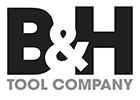UNDERSTANDING & COMMUNICATING DRAW DOWN RATIO BALANCE
In a previous issue of the Extruder newsletter, we explained Draw Down
Ratio (DDR) and its impact on tooling design for plastic tubing, hose and
wire insulation jacketing. This article complements that discussion by
explaining Draw Ratio Balance (DRB). The need to understand the
relationship between the dimensions of the tooling and those of the
final product is met by understanding both Draw Down Ratio and Draw
Ratio Balance. It is required that both the tooling designer and extruded
product manufacturer understand and are able to communicate these
relationships to each other.
Draw Down Ratio is the ratio of the cross sectional area of the extruded
plastic melt to the cross sectional area of the plastic in its final product form,
be it a tube, hose or insulation on a core, such as a wire or cable. It is the
extent to which the plastic has been reduced in size to make the part.
A larger DDR enables faster production rates, while a lower DDR facilitates
more precise control of the product dimensions. A low draw down ratio
process is more stable than a high one.
Success in specifying DDR lies in the skill and experience of the
manufacturer. B&H Tool Company, with many years experience in
the design and manufacturing extrusion tooling, is well able to help
in this regard.
Draw Ratio Balance describes the balance between the rate the outside
of the cone draws down, and the rate the inside of the cone draws down.
Most products made by drawing a plastic melt are smaller in cross sectional
area than the tooling gap.
B&H Tool Company has made available on its website a Draw Down
Calculator where you can input dimensional data and calculate draw down
ratios and draw ratio balance. You can determine the current draw down
ratio of your existing tooling and product and determine the balance
between them. You ca also use the calculator to deter-mine the tooling
sizes required to extrude a product with known target dimensions
and acceptable draw down ratios.
As you work with the calculator and make adjustments to the data,
the results and adjustments will be recorded and printable for your review.
Niall McKee, Senior Technical Consultant with
DuPont Fluoropolymers offers these insights:
Drawing down the cone creates different angles inside and outside the
cone, which differentiates the distance and speed the plastic melt needs
to travel on the outside of the cone to that traveling on the inside.
(See figure 1) This is very obvious with large Draw Down Ratios.
It is important that the plastic melt flows smoothly down to its final
size. When the tooling is out of balance, one of the cone’s surfaces is
trying to feed more plastic than the other surface can handle. When the
cone’s inside and outside lengths are equal, the Draw Ratio Balance is 1.00.
In most tubing set-ups, this is the desired condition. In jacketing
applications where the plastic ID is supported by a core, production
rates are usually faster. Experience has taught us that a slight positive
DRB (1.03 to 1.08) is preferable in that case. At all times, a negative DRB,
i.e. less than 1.00, should be avoided.
As the sides of the draw down cone cannot be measured, we again
use geometric relationships to determine the DRB. If the ratio of the
die diameter to the product outside diameter is Ratio 1(R1), and, the
ratio of the tip diameter to the product inside diameter is Ratio 2 (R2),
then, the ratio of R1 to R2 is the Draw Ratio Balance.
Stated another way, the die diameter divided by the product OD,
all divided by the tip diameter divided by the product ID is the DRB.
It sounds complicated but it is not really. (D/O)/(T/I) = DRB
Where: D = Die Diameter T = Tip Diameter O = Product OD I = Product ID
Example: Determine Draw Ratio Balance Die Diameter = .500″
Tip Diameter = .250″
Product OD = .250″
Product ID = .125″ (.5/.25)/(.25/.125) = 2/2 = 1.00 DRB
To increase the DRB, increase the Die Gap by either increasing
the Die Diameter, or decreasing the Tip Diameter or a smaller
adjustment of both.
Example: Increase Die Diameter by .020 Die Diameter = .520″
Tip Diameter = .250″
Product OD = .250″
Product ID = .125″ (.52/.25)/(.25/.125) = 2.08/2 = 1.04 DRBExample: Decrease Tip Diameter by .010 Die Diameter = .500″
Tip Diameter = .240″
Product OD = .250″
Product ID = .125″ (.50/.25)/(.24/.125) = 2/1.92 = 1.04 DRB
To decrease the DRB, decrease the Die Gap by either decreasing the
Die Diameter or increasing the Tip Diameter or a smaller adjustment
of both. Out of balance tooling will cause disruptions to the final product
dimensions. Tubing may fold in on itself trying to reach a balanced
condition. Wire insulation tooling imbalances may break the cone or
form teardrops. Understanding the need for and achieving a Draw
Ratio Balance will prevent many product quality headaches.
Use the easy to understand “fill-in-the-blank” calculator to determine
your tooling DDR and DRB. Or contact B&H Tool Company for assistance.

For the example above:

Some manufacturers and designers will simply state that they are
using a multiplier on the finished product diameter dimensions of OD
and ID. In the example, the multiplier would be two.
This may seem obvious with the example given; however, when
using odd dimensions, the proper formulas prevent the inaccuracies
of guessing or being led into doing some quick divisions based on
diameters rather than areas. If you remember high school geometry,
you might wonder what happened to Pi in figuring areas. With this
formula, you can dispense with it; the results will be the same.
